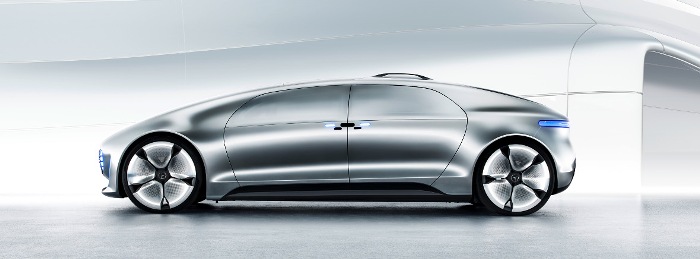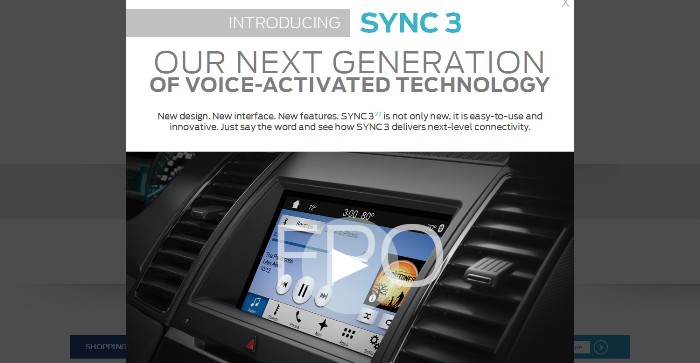Think Google’s Driverless Car Is Cool? These Car Tech Have More to Offer
![By Driving_Google_Self-Driving_Car.jpg: Steve Jurvetson derivative work: Mariordo [CC-BY-2.0 (http://creativecommons.org/licenses/by/2.0)], via Wikimedia Commons](https://techtheday.com/wp-content/uploads/2014/05/Googles-Self-Driving-Car.jpg)
By Driving_Google_Self-Driving_Car.jpg: Steve Jurvetson derivative work: Mariordo [CC-BY-2.0 (http://creativecommons.org/licenses/by/2.0)], via Wikimedia Commons
Google’s driverless car has been at the least interesting if not impressive. However, when it comes to advanced car tech, Google is definitely not having a monopoly of the splendid new stuff. 2015 is bringing with it new car technologies that are not only impressive but also practical and easier to integrate in daily life.
The following are the new hi-tech automotive concepts, designs, and products showcased at this year’s Consumer Electronics Show in Las Vegas:
- VW Golf R Touch
Volkswagen’s Golf R Touch is notable for offering an all-touchscreen user interface as well as gesture control for the car. The car’s dashboard gets rid of the buttons and offers three separate large touch screens. Production will be within the next two years. This technology is expected to be offered in the next generation Phaeton luxury sedan.
- Audi Prologue
Audi Prologue is a concept car that features a hybrid powertrain with a style that can be considered as a glimpse of what the next-gen A6, A7, and A8 will be offering. The car features a three-dimensional instrumentation and a dashboard display that rises from the center when the ignition is turned on. The display presents all the standard controls for the car. The rest of the frequently used control buttons are on the steering wheel and transmission tunnel.
- Mercedes-Benz F015
This is another concept car shown at CES 2015 earlier this month. It is a futuristic car with an aero-shaped monolith design. It is equipped with two fuel cell powered electric motors capable of cranking up to 272-horsepower operation and a sustained output of 163 horsepower. While this sustained motor power is at the lower bracket of what most luxury cars offer, the Mercedez-Benz F015 can still reach 125 miles/hour. Also, it should be mentioned that this car can drive autonomously. When driving autonomously, the passengers may swivel the seats to create a lounge-like setup.

Screenshot of the official Mercedez Benz F015 page (https://www.mercedes-benz.com/en/mercedes-benz/innovation/research-vehicle-f-015-luxury-in-motion/)
- Laser Lights on Cars
Mind you, these are not meant to serve as weapons. When BMW i8 and Audi R8 LMX were outed last year, many thought their laser lights were gimmicky. Well, for the most part they are, being prominently touted in marketing copies. However, low-beam and high-beam laser applications are actually useful. Lasers on cars can be used to measure lane widths and clearances, which can help drivers assess if they should pursue a particular lane or path. Also, crosswalk lasers may be projected onto the road to tell pedestrians that the driver is yielding.
- Inductive Charging
The efficient induction cookers have now become common home appliances. It only makes sense exploring the possibility of exploiting induction technology for battery charging. In this year’s CES, induction technology has been showcased to provide convenience for electric car users who find it frustrating dealing with electric plugs to charge their cars’ batteries. The technology is not yet available for mass deployment but hopefully, it can be integrated in car parks and electric car charging stations soon.
- Ford SYNC 3
This Blackberry-QNX-based sequel to the mediocre Ford SYNC 2 shows a lot of promise as it offers tremendous improvements. The most notable of which are the greater intuitive and faster response. Ford vehicles will likely love this and may want to forget their disappointment in the SYNC 2. The engineers behind Ford SYNC 3 are aiming to offer performance and responsiveness comparable to those of popular tablets and smartphones. This new system effectively makes MyFord Touch unnecessary as it also handles HVAC controls.
- eHorizon Cloud-based Computing for Cars
Created out of the collaboration of IBM, Continental, and HERE, eHorizon offers more than just the exchange of traffic information for cars. It harnesses cloud-based computing to feed information that enables the efficient powertrain strategy. Basically, what it seeks to do is to enable autonomous driving systems that can “look around the corner.” This means a more efficient and safer driverless driving. It’s not a new technology but it is arguably better than what have been shown in the past.
Automotive technology continues improving. Hopefully, the next wave of technological advancements for cars focus on fuel efficiency or the use of alternative fuels that are in abundance and are less damaging to the atmosphere.
